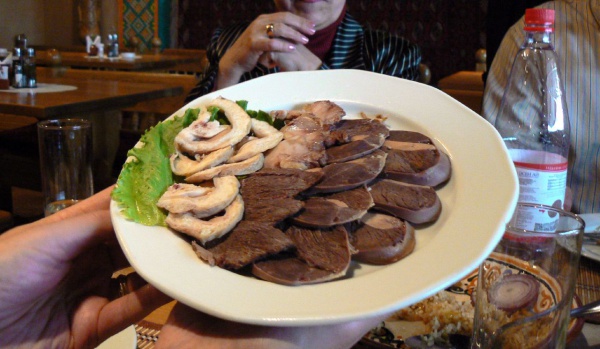Facts About Kazakh cuisine
Kazakh cuisine is a vibrant reflection of its nomadic heritage, centering around mutton, horse meat, and dairy products. Traditional cooking methods focus on preserving food for extended periods, utilizing techniques such as salting and drying. Meat forms the cornerstone of Kazakh dishes, with staples including Beshbarmak and Kuyrdak. Popular items also encompass Kazy, Shuzhuk, and various horse meat delicacies. Dairy products like Sut, Kaimak, and Kurt also hold significant importance in Kazakh cuisine.
With the introduction of flour, the culinary repertoire expanded to feature dishes like Baursak, Shelpek, Manti, and Nan. In terms of beverages, Kazakhs savor fermented mare's milk (Kumys), camel's milk (Shubat), cow’s milk (Airan), and tea. Tea ceremonies occupy a special place in Kazakh culture, symbolizing hospitality and respect. For desserts, treats like Baursak, Shelpek, and Shek-shek are favored.
Kazakh cuisine has additionally been influenced by various ethnic groups, enriching its diversity with vegetables, fish, and baked dishes. Nomadic cooking relies on minimal equipment, with the iron kazan serving as an essential tool. When serving meat, hosts ensure that the best cuts are reserved for honored guests, reflecting deep-rooted traditions of hospitality.
Meals are typically enjoyed at low tables called Dastarkhāns, where the presentation of beautiful dishware is paramount. Special etiquette rules govern tea ceremonies, where the amount of tea poured indicates the host's respect for the guest. Each family often possesses unique wooden spoons, highlighting their significance in Kazakh food culture.

 Uzbekistan
Uzbekistan